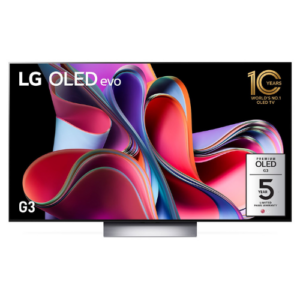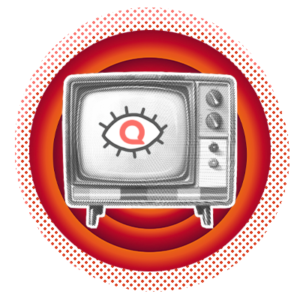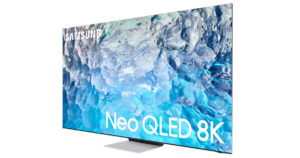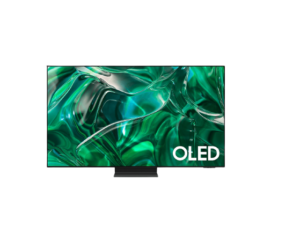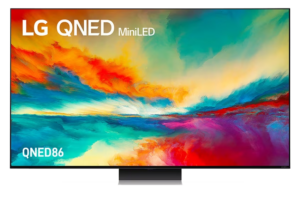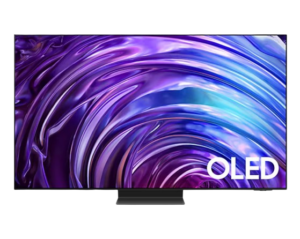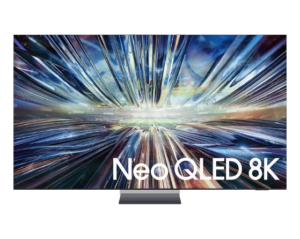The LG G3 OLED 4K TV pitches QLED brightness with OLED quality at a steep asking price.
LG G3 OLED 4K TV review
I was a Samsung TV devotee after I reviewed a 1080p tele many moons ago. Fast-forward to the dawn of the best 4K TVs, and I fell in love with the crisp image of the LG C7 in 2017. That LG C7 4K TV served me well for close to six years before the sudden appearance of sporadically noticeable burn-in (a problem that plenty of others reported during my troubleshooting research).
The 4K TV landscape has changed quite a bit since 2017. While I was willing to shift away from LG, my research ultimately led to a pricey but powerful LG G3 OLED 4K TV. After months of testing and hundreds of hours of use, I have zero regrets about my purchase. Here’s why.
LG G3 OLED 4K TV value for money
The LG G3 OLED 4K TV isn’t cheap. To be honest, I only made the leap from LG C-series to G-series because the latter boasts a noticeably brighter panel this generation. Prices for the LG G3 OLED 4K TV start at $4,195 for the 55-inch model, which is the one I bought.
Alternatively, expect to pay around $5,295 for the 65-inch model, $8,395 for the 77-inch screen and am eye-watering $10,995 for the 83-inch version at full retail prices. Comparing the 55-inch version to its peers, the LG G3 OLED 4K TV is comfortably the most expensive: $200 ahead of the Samsung S95C QD-OLED and Samsung The Terrace QLED, plus $700 pricier than the Sony A80L OLED. For context, the $4,195 asking price for the LG G3 OLED 4K TV 55-inch version is $900 more than the LG C3.
LG G3 OLED 4K TV design and setup
Whenever I review TVs, the first thing I like to test is how easy they are to set up. From getting a tele out of the box through to placing it on a TV unit, I’ve mostly gotten away with setting up 55-inch 4K TVs solo. That wasn’t the case with the LG G3 OLED 4K TV.
As I discovered in my LG G1 review , the LG G-series is first and foremost designed to be wall-mounted. That’s great if you have a compatible wall mount or own your home and don’t mind the prospect of adding your own mount. For everyone else, that leaves a pedestal stand as a necessity. While it shipped in a separate box, I was glad to see that LG is selling G3 TVs in Australia with a pedestal stand, which wasn’t the case with the G1.
As far as I can tell, that pedestal stand is the same as the one for the LG G2 TV, but not having to buy it separately means a saving of around $350. The thing is, the way the pedestal stand is designed, it took a bit of messing around before I could actually attach it. Eventually, I cleared my coffee table, covered it in a doona and placed the G3 face down to (somewhat) comfortably install the angled pedestal stand. Oh, and angled is twofold here: angled in how you attach it to the back of the G3 and also in how it makes the TV sit back at a slight angle, assumedly to deter it from toppling forward. There’s also an included anchor for extra stability.
Stand-attachment gripes aside, the rest of initial configuration is a cinch. There’s a power cable with plenty of slack and some clever panel wizardry at the back of the G3 if you want to hide cables. I also appreciated the continued trend of four HDMI 2.1 ports—two of which are essential for getting the most out of my Xbox Series X and PlayStation 5 consoles—and three USB ports. As far as I can tell, the USB ports are USB 2.0 instead of 3.0, but that’s less of an issue for streaming video than it is on modern computers.
After everything was plugged in and with tele powered on, the LG G3 guides you through some basic easy-to-follow setup with the great remote control. Once you’re up and going, you can also use straightforward voice commands to control basic functionality, which is a nice touch.
LG G3 OLED 4K TV everyday viewing
Most of my TV viewing these days boils down to two main fast-moving activities: sports and gaming. Watching 4K sports streams on Stan Sport is spectacular, without the ghosting of fast-moving objects that I was used to on older OLED screens. The same is also true with the scores of hours of cricket on Kayo Sports I’ve watched on the LG G3 OLED 4K TV (admittedly, with HD streams), which is much better at ball tracking even when it’s smashed with gusto out of a stadium.
It gets even better with movies and TV shows. Even older content like Seinfeld on Netflix or Sex and the City via Max (formerly HBO Max) look great on the bright OLED panel. But the better returns come from upping the resolution. Extraction 2, for instance, was a great test of tracking complex fight choreography in a mix of low-light and fully bright settings, which the LG G3 OLED 4K TV tackled effortlessly.
As you might expect, the best results come from a 4K disc. In the lead-up to Indiana Jones and the Dial of Destiny, I watched 4K discs of Raiders of the Lost Ark and Temple of Doom. Both are sensational 4K transfers—sometimes too good when you notice more goofs than you should—and the mix of daylight and low-light scenes were seamlessly handled by the LG G3 OLED 4K TV, even watching in a bright room during the day, which is typically the bane of OLEDs.
LG G3 OLED 4K TV versatility
Look, I’ll be honest. There’s very little chance I’m going to ditch my Nvidia Shield TV Pro’s Android TV operating system for LG’s WebOS anytime soon. Still, I can appreciate LG’s clean, logical layout alongside a range of practical preinstalled apps and other available options. The remote has dedicated buttons for Netflix, Prime Video, Disney Plus, and Stan, but the other usual-streaming suspects like Binge, Apple TV Plus and YouTube are also preinstalled.
The remote also has dedicated buttons for LG Channels—which were more miss than hit in my perusal—and an Alexa button, though the LG G3 OLED 4K TV also supports Apple Homekit and Google Home for smart homes. In terms of practical inclusions, I was relieved to see pixel-shift features enabled by default, which should help to avoid burn-in down the track (fingers crossed). You can also manually perform these burn-in prevention features with the TV on or set it for when the LG G3 OLED 4K TV is off.
Connect a USB hard drive directly to the back of the LG G3 OLED 4K TV for straightforward streaming or download the unsurprisingly popular Plex TV app for a much more attractive streaming interface. It’s also great to see the LG G3 OLED 4K TV offer practical hand-holding by intelligently prompting display changes based on the connected and powered-on input. It makes life easier when shifting between video-playback devices and gaming consoles.
Speaking of consoles, Diablo IV looks and plays great on the LG G3 OLED 4K TV, including during the many, many low-light missions. All of my testing was done with default or prompted settings, but there’s a good range of presets if you want to switch it up. Alternatively, you can personalise them further in the settings. On the gaming front, the LG G3 OLED 4K TV also has a native app for GeForce Now, which is a nice inclusion, but it did make me wish LG had a native app for Xbox Cloud Gaming (even if you can access that via the web browser).
Is the LG G3 OLED 4K TV worth buying?
At the time of writing, the 55-inch LG G3 OLED 4K TV was $800 cheaper than the RRP I paid for it at launch. If you can get it for around that price, your eyes will thank you for the investment the first time you use it.
For typical pricing or larger screen sizes, the extra investment may have you glancing sideways at the competition, but it’s hard to look at other TVs once you’ve experienced the LG G3 OLED 4K TV in all its bright glory.
How we review TVs
TV reviewing starts with a comparison with the competition in terms of price and inclusions. It’s okay if a new-model TV is pricier than its peers as long as there’s value to justify the higher fee. In terms of all-important inclusions, modern TVs should be at least 4K resolution (if not 8K) and include at least four HDMI ports (ideally, HDMI 2.1), internet connectivity and USB ports for added versatility.
The next step of the review is hands-on with initial setup. We like a TV that has a straightforward setup. Bonus points if it’s possible to set up with one person. Ideally, a TV should provide a pedestal stand and wall-mounting options. After everything is connected, we evaluate the intuitiveness of the initial configuration as well as the apps that are preinstalled and the app shortcuts featured on the remote.
Then it’s down to the nitty-gritty of everyday testing. We use the TV as our main tele, comparing it to what we’re used to. Testing involves streaming content from different services in different resolutions, disc playback as well as gaming. We really like a TV that automatically switches playback modes for regular viewing and fast-moving entertainment like sports and gaming.
LG G3 OLED 4K TV frequently asked questions
Related Articles





